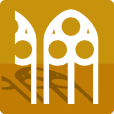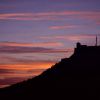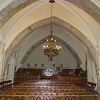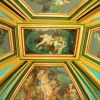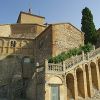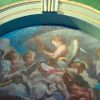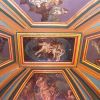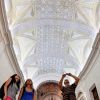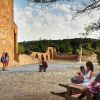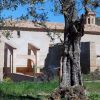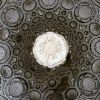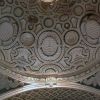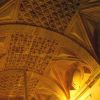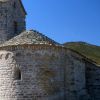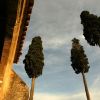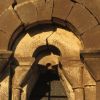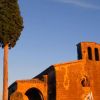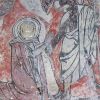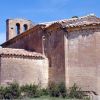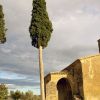Ruta de las ermitas
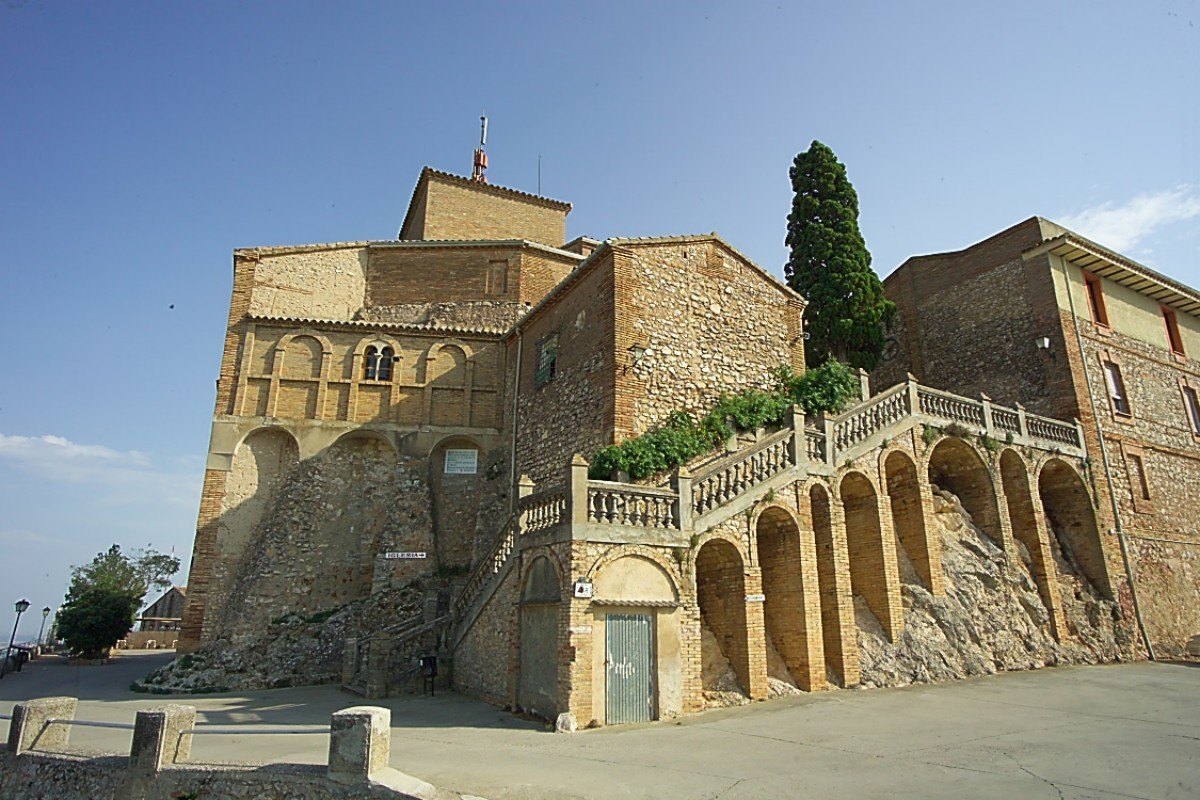
Historical records from the 11th century make reference to a castle that once stood on the site of the current building; a hill that soars to a height of 673 metres. People have come to this spot for centuries in order to worship the image of the Virgin Mary who is said to have appeared to a shepherd called Balandrán above a nearby almond tree.
The monastery is made up of buildings from different eras and typologies. The oldest are the cloister and the church, which date back to the 13th century.
The medieval church was built in the centre of a raised area, atop a rocky prominence, and was made with sandstone taken from a quarry on the same hill. The oldest part is the nave, which is made up of five sections separated by thick, pointed arches that are square in appearance. The central elements of the vaults, the keystones, are decorated with the stripes of Aragon, the crest of Barbastro and the almond tree, above which the Virgin Mary is said to have appeared.
A huge iron grill separates the nave from the east end of the church. This part was originally flat but was substituted by a polygonal structure in the 17th century. It is covered with a hemispheric dome supported by pendentives, which boast the crest of the bishop, Alonso de Requeséns, who sponsored the work. There are only scant remains of the paintings that once decorated the dome, which were painted by Diego Gutiérrez in 1786.
With the aim of satisfying the needs of fervent congregations who wished to worship the image of Our Lady up close, a small chapel was built behind the altar in the 18th century. Entrance was gained through narrow passageways that led from the presbytery.
The interior of the chapel was decorated with paintings and the ceiling was covered with scenes of the life of the Virgin Mary - the Visitation, the Annunciation, the Nativity and the Epiphany - as well as number of angels. The cardinal virtues are depicted on the chamfers:
Strength is depicted as a strong woman dressed as a warrior, armed and wearing a helmet.
Justice is shown as a pair of scales, the symbol of equality, and a sword, an emblem of strength, with which decisions should be made.
Temperance reveals pitchers of cold water to cool burning irons. Prudence is depicted as a mirror, a symbol of reflection and of self awareness, and a snake, evoking the phrase of St Matthew “Be ye therefore wise as serpents and harmless as doves.” (Matthew 10, Chapter 16)
The Gothic sepulchre of San Balandrán stands in a small room attached to the church. He was a man of great stature and tradition says that Barbastro’s young people must be able to touch the ends of the sepulchre with their extended arms before entertaining aspirations of marriage.
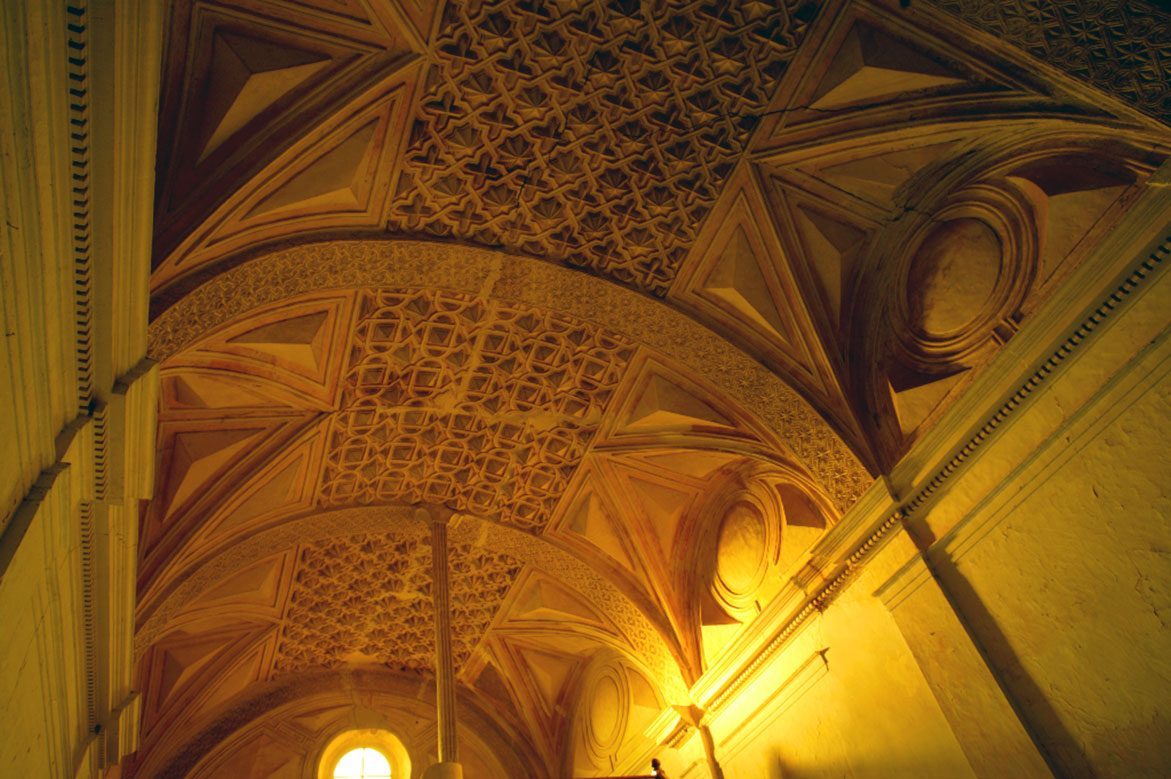
The shrine of Nuestra Señora de Dulcis is located in the vicinity of Buera. A track leaves the village and winds between fields of almond trees, cereal, vines and scrub before arriving at the shrine, a few kilometres from the centre. The building is located on a plain with an abundance of gorse, rosemary and thyme resulting in a high number of honeycombs in the area.
According to popular tradition, Our Lady appeared above one of these honeycombs in the spot where her image is now revered. This legendary event explains the devotion shown by the people who came from afar to worship in this chapel.
The apparition is said to have taken place around the 12th century and a chapel dedicated to the Virgin Mary must have already stood in this place at that time. However it was replaced in the 17th century by the current building.
The church has a single nave covered in a vault with attractive lunettes and the positioning of the two side chapels creates the shape a cross. The square shaped chancel is covered with a small dome supported by pendentives and crowned with an oculus. The vestry is joined to the north wall and the choir takes pride of place in the west end of the building. The most impressive element of this building is the magnificent interior décor made up of intricate plasterwork.
Two different ornamental repertoires are brought together in Dulcis. The first has strong Mudejar roots and can be seen on the vaulted ceiling of the nave, the south chapel and certain decorative elements in the chancel. The other is more Baroque in style, of classic western affiliation, and is found in the north chapel and other parts of the chancel.
The material used to create the motifs that adorn the inside of the chapel is plaster. It was widely used as it was ideal for the decoration of vaulted ceilings; easy to work with due to its ductility and cheap due to it being widely available in the region.
With this in mind, the decoration techniques used to decorate the ceiling of the Dulcis chapel included a combination of basic sculpture and modelling. A design was first sketched on the panels of fresh plaster followed by gentle sculpting to create the raised edges of the circular shapes. These interweave to form geometric designs and the gaps were then filled with moulded motifs.
There is nothing on the austere exterior of the church to indicate the rich splendour of the decoration to be found on the inside. This is a characteristic feature of Aragonese baroque.
Another peculiarity of this style in Aragon is the endurance of certain decorative traditions such as the Mudejar style. Despite the expulsion of the artisans responsible for its introduction, the Moors, it was still widely used in Aragon until eventually becoming a recognised decorative style in the 17th century.
This abundance of decoration masked the poor quality of the materials used in the construction of the church. These were cheap materials, such as plaster, which was used extensively to decorate the ceiling of the nave (the aforementioned Mudejar geometric motifs) and the whole of the east end.
The interior of the chapel reveals two distinct areas that stand out immediately; the simple nave, a place for the faithful, and the chancel, location of the altar. The decoration of the latter is plentiful with the use of vibrant colours highlighted by light entering from the oculus at the top of the dome. It is the most important focal point of the church and attracts all who enter towards the altar.
The decor converts the vaulted ceiling of the nave into a star filled sky, filled with soft golden light that filters in through the oculus of the church’s west end.
Telf. 620 057 721
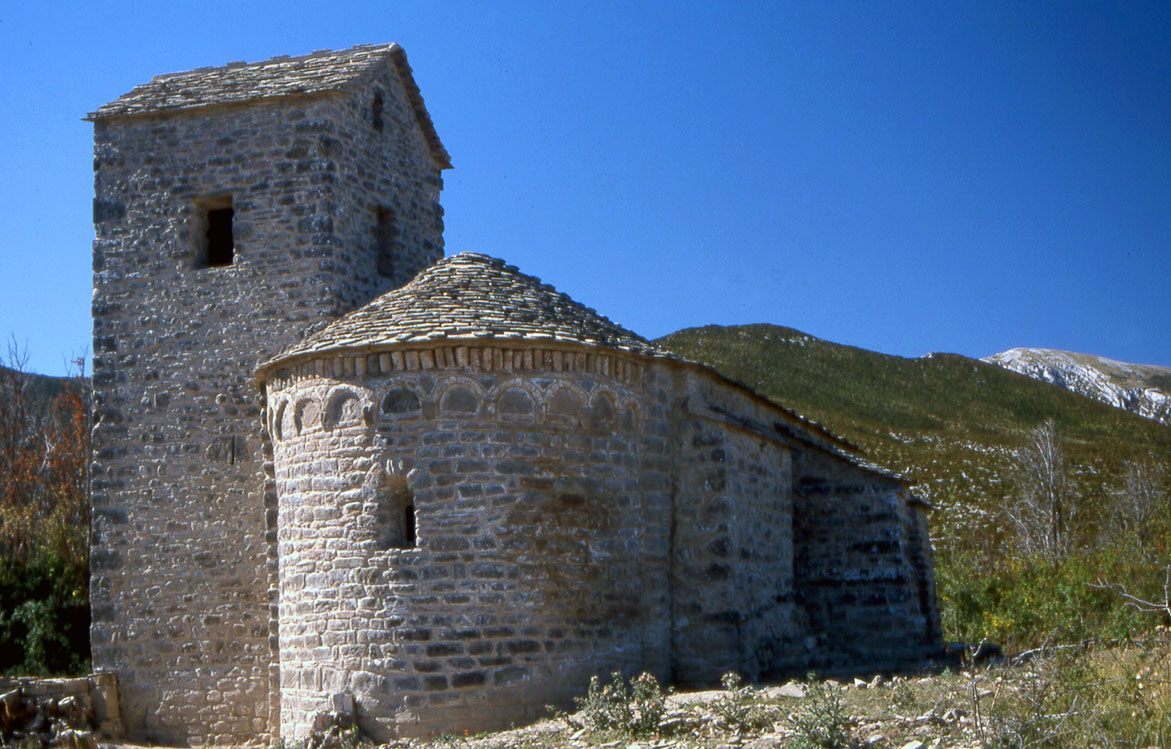
A pretty path leaves from the Honguera neighbourhood of Rodellar and passes through the abandoned village of Cheto at 801 metres altitude before descending down to the banks of the Mascún canyon. The path takes in a number of unusual and dramatic rock formations known locally as; Delfín, Cuca Bellostas, Ciudadela, Agujas, Caos, Beso and Los Oscuros. It also passes the Losa Mora dolmen and climbs up to Nasarre at 1199 metres above sea level.
The village, abandoned since the 1950s, is surrounded by barren land that was once cultivated. It once had a blacksmiths and a magnificent well with a vaulted chamber which was accessed by an underground staircase. The San Andrés chapel is set apart from the rest of the village.
All that remains of the original 11th century Romanesque construction is the cylindrical apse, with a deep, arched window, all made with rough ashlars. The exterior is decorated with a blind arcade with 11 small arches that rest on cantilevers. Those situated at the far ends are lower than the others. The gaps between the arches are filled by monolithic tympanums.
Above these and joining two pillars made of ashlars there is a frieze with a total of 43 vertical mouldings placed closed together that encircles the apse. They have a unique character that go towards differentiating this church from other Larredense Romanesque constructions; they are short and a good number of them are decorated on their open edge with oblique bands carved to resemble rope.
In the 17th century the church was renovated and the current nave, tower, vestry and doorway date back to this restoration. Inside the church, on the lintel above the entrance door to the vestry are the remains of a painted sign whose inscription relates to the renovations: "SI(ENDO) / RE(TOR EL) / REB (ERENDO) / MOPS (ENPE) / DRO (AGU)/ ILAR / 1628".
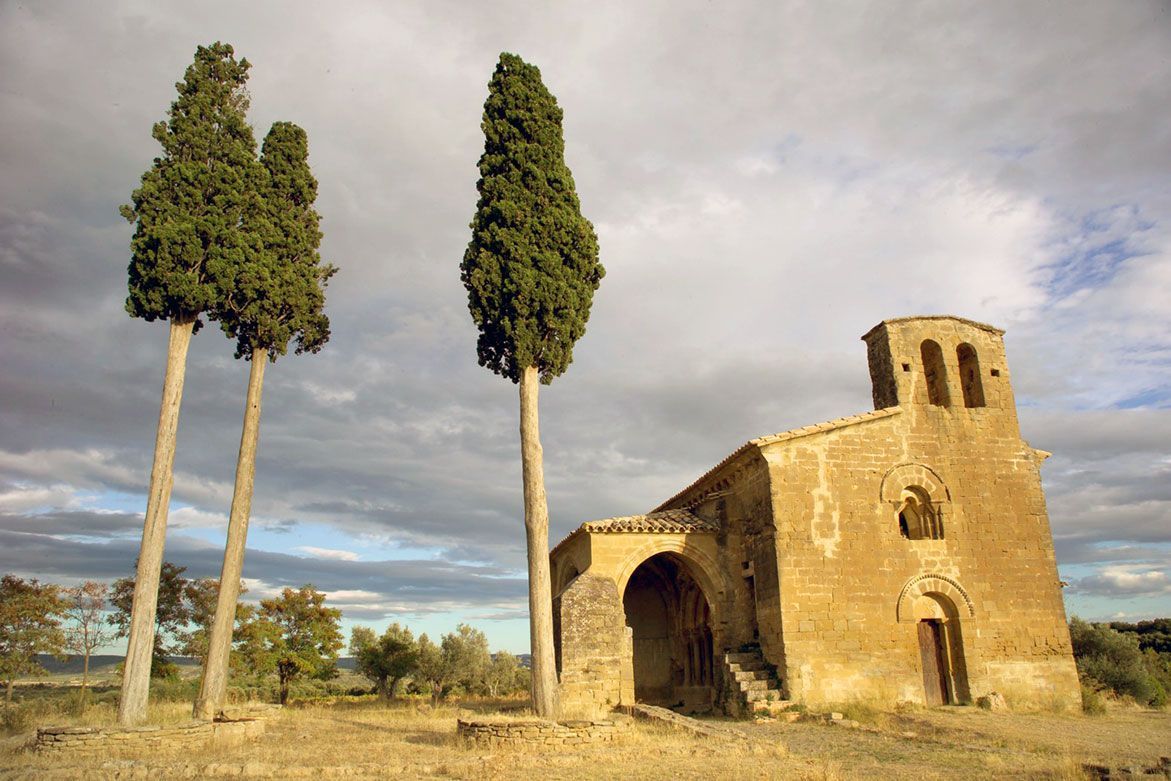
The chapel of Nuestra Señora de Trevino in Adahuesca (13th century) is all that remains of an old monastery, which once had an elegant cloister. There are very few historical references to the original building, but with a bit of imagination it is possible to recreate an image of the square cloister, once planted with laurel and now with cypress. Slender columns supported an arcade with semi-circular arches and a well stood at the centre; its water often saved the village in times of drought. Constructed in the 14th century, it was demolished in 1965 due to the threat of complete ruin.
It is thought that the name Treviño may be derived from the Spanish word viña meaning vine as the chapel is, and has always been, surrounded by vineyards, although there is another theory. Legend tells that Treviño was on the boundaries of three distinct dioceses and that the three church dignitaries could hold meetings around a table without leaving the limits of their own parish. History or legend, it is true that the word Treviño appears to come from the Latin word trifinium meaning three frontiers, boundaries, regions or people.
The church’s east end is polygonal in appearance from the outside with a semi-circular internal appearance and the nave is covered with a pointed barrel vault. The cornice that runs through both the apse and the nave is supported by a corbels roughly decorated with geometric motifs, scrolls and human faces.
The smaller doorway on the main facade opens up into a semi-circular arch. This is framed by a moulding with diamond points and the tympanum boasts a Christogram with a symbol of the Holy Trinity. Above this there is a window with the same diamond-point decoration.
The main doorway is on the north wall and presents five archivolts and various capitals. The facia is decorated with geometric motifs, a decoration of scrolls on the intrados of the arch and the remains of chequered moulding. Previously, there had been a Gothic porch and both parts of the building had a polychrome finish. The Romanesque masons were limited in terms of the carving of ashlars for the walls and the voussoirs of the arches. Only the most skilful were able to achieve highly decorated pieces, mostly featuring vegetal or geometric repertoires such as those on the archivolts and the capitals of the doorway. The corbels that support the cornice also give examples of their work with roughly carved, anonymous human faces that are likely to have church provosts, stone masons, nobles or plebeians.
The principal teachings of architecture of the Romanesque era were those of solidity, durability and huge proportions. To apply these principles it was necessary to master the stone vault, which, with its concave shape, also made symbolic reference to the celestial vault of heaven. However, the thickness of the supporting walls impeded the opening of large windows and the lack of light generates a special atmosphere that is palpable upon entering a Romanesque temple.
The interior walls were usually chiselled or chipped in order to obtain a flat surface of the right texture for murals. In the Romanesque era the walls were seldom left unpainted and it was considerably cheaper to display a pictorial programme than to order carved pieces.
In the apse, it is still possible to see the remains of paintings that represent Jesus being resuscitated, with the appearance of Mary Magdalene; they are both informative and expressive. The painting is outlined with thick black lines that frame the flatness or brightness of the different colours, mainly red, blue and white.
Both inside and outside the temple, the pure and intense colours shown on the capitals, the shafts and the archivolts are testament to the stonemason’s work.
On Good Friday, the inhabitants of Adahuesca dress as Romans and go to Treviño as they have over many years and after the mass they share out biscuits and wine. According to tradition, the Virgin Mary performed a multitude of miracles to those who attended the church. Wax and silver votive offerings made in the shape of eyes, legs, hands and feet are attached to the chapel’s wrought iron grille and make reference to the many miraculous recoveries. In the18th century it was still possible to see the shirt and shoes of a woman hanging on the grille; it is said that was hit by a bolt of lightening while praying yet left the church unharmed.









